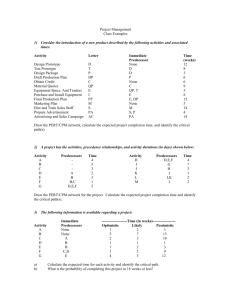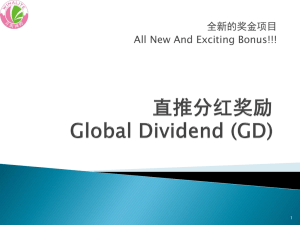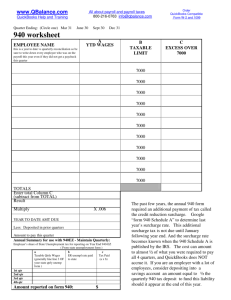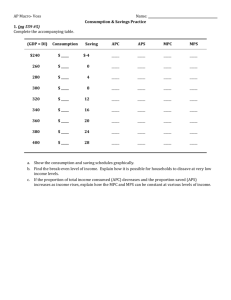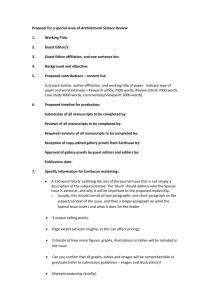Document
advertisement
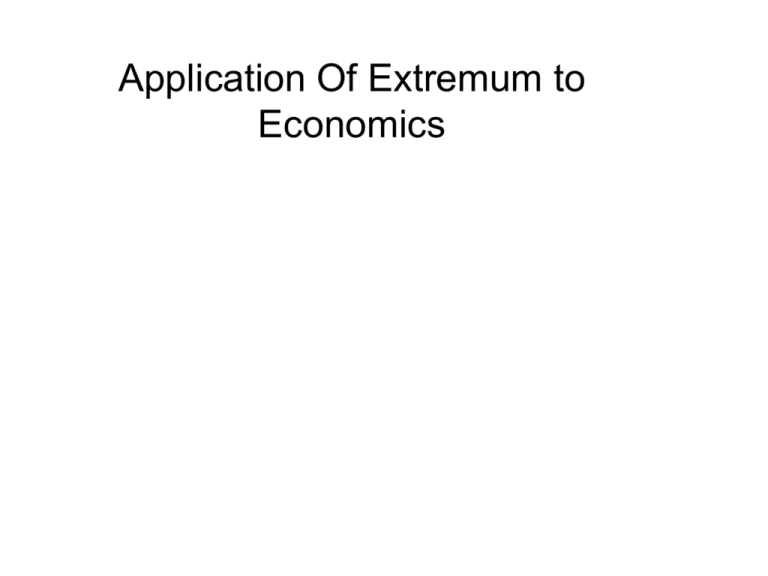
Application Of Extremum to Economics The Demand Function: The demand function is the function relating the price p(x) of a unit of a product to the number of units x produced The Cost Function: The cost function is the function relating the total cost C(x) of producing an x number of units of a product to that number x The Revenue Function The revenue R(x) function is the product of the number of units produced x and the price p(x) of a unit. Thus: R(x) = x p(x) The Gain (Profit) Function The Profit P(x) function is the difference between the revenue function R(x) and the total cost function C(x) Thus P(x) = R(x) – C(x) = x p(x) – C(x) Maximizing the Profit To find the number of units x of the product that should be produced to attain the greatest profit, We inestigate the local extremun for the profit function P(x), by finding the critical point(points) for that function This will be the point(points) at which the first derivative P′(x) of P(x) either zero or nonexistent. Checking for Maximum If x0 is a number at which P′(x) = 0 , while P′′ (x) is negative, then x0 is a point of local maximum. To check whether this is a point of absolute maximum, we have to consider the the other values of the function over its given domain. Examples A factory director discovered that the total cost C(x) of producing x units of extremely sophisticated PC’s is: C(x) = 0.5x2 + 4000x + 48000000 And that the price p(x) of the unit is subject to the demand equation: p(x) = -0.5x + 18000 Questions Find The number of units that should be produced for the factory to obtain maximum profit. The maximum profit obtained. The price of the unit. Solutions We have: P(x) = R(x) – C(x) = xp(x) – C(x) = x (-0.5x + 18000) – (0.5x2 + 4000x + 48000000) = - x2 + 14000x - 48000000 The maximum Profit P(x) = - x2 + 14000x – 48000000 →P′(x) = - 2x + 14000 = - 2 ( x – 7000) Letting P′(x) = 0 , we get: x = 7000 Thus x = 7000 is a critical point We also have: P′′ (x) = - 2 → P′′ (7000) = - 2 < 0 Thus x=7000 is a point of local maximum P(x) = - x2 + 14000x – 48000000 At x=7000, we have: The profit: P(7000) = - (7000)2 + 14000(7000) – 48000000 = ( - 49 + 98 - 48). 106 = ( 98 – 97 ). 106 = 106 The Price p(x) = -0.5x + 18000 At x=7000, we have: The price: p(7000) = - 0.5(7000) + 18000 = - 3500 + 18000 = 14500 Graphing P(x) P(x) = - x2 + 14000x – 48000000 P(x) intersects the x-axis at X = 6000 and x = 8000 Why? P(x) =0 iff - x2 + 14000x – 48000000 = 0 Iff x2 - 14000x + 48000000 = 0 Iff ( x – 6000) ( x – 8000 ) = 0 Iff x = 6000 0r x = 8000 The Graph of P(x) • Graph of P(x) • Graph of P′(x) • Graph of P′′ (x) Graph of P P(x) = - x2 + 14000x – 48000000 = - ( x – 6000) ( x – 8000 P 106 6000 - 48 .106 7000 8000 x Graph of the derivative P′ of P • P′(x) = - 2x + 14000 • = - 2 ( x – 7000) p′ 14000 x 7000 Graph of the Second Derivative P′′ of P P′′ (x) = - 2 P′′ x -2 Comparing P , P′ and P′′



